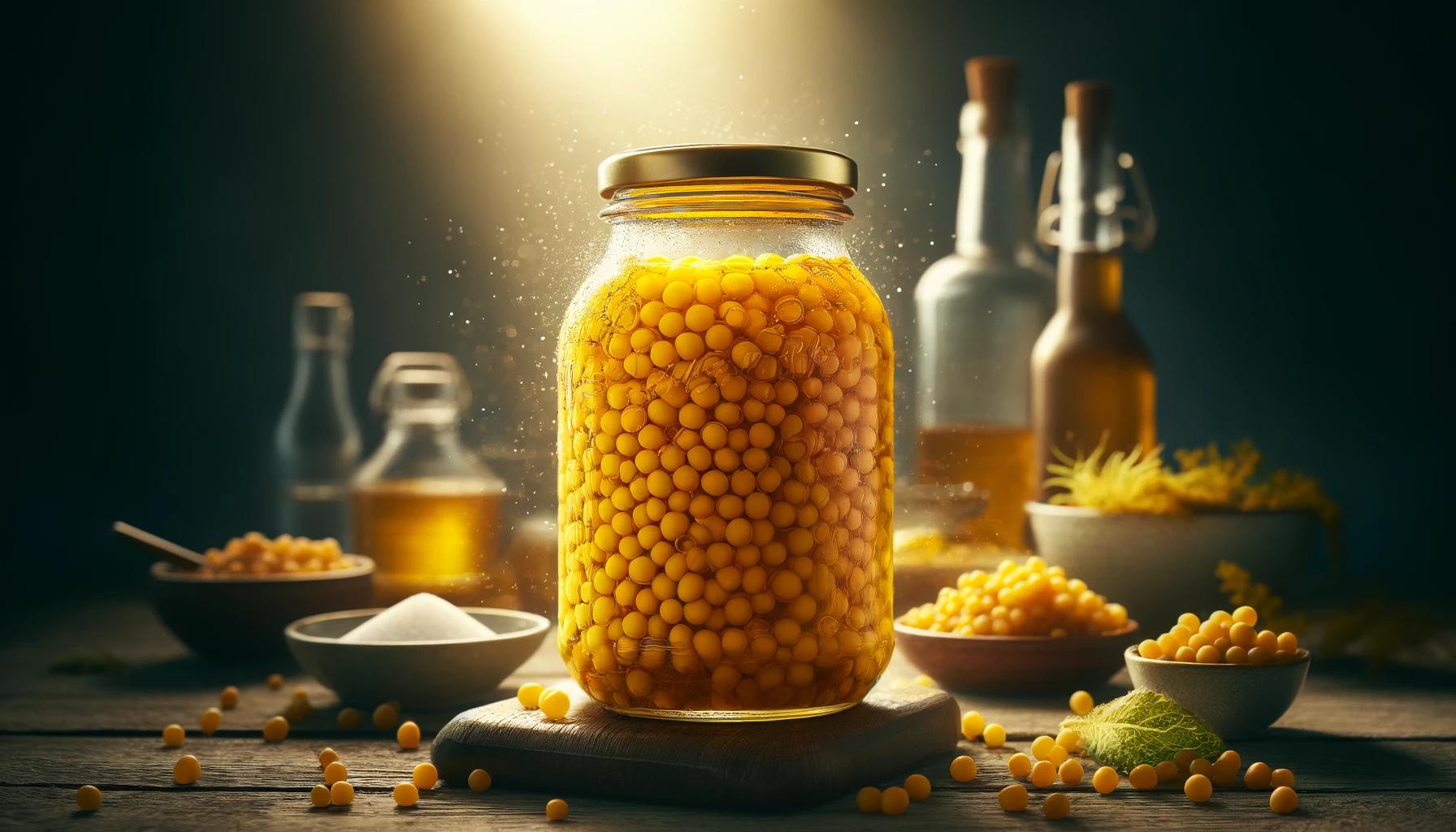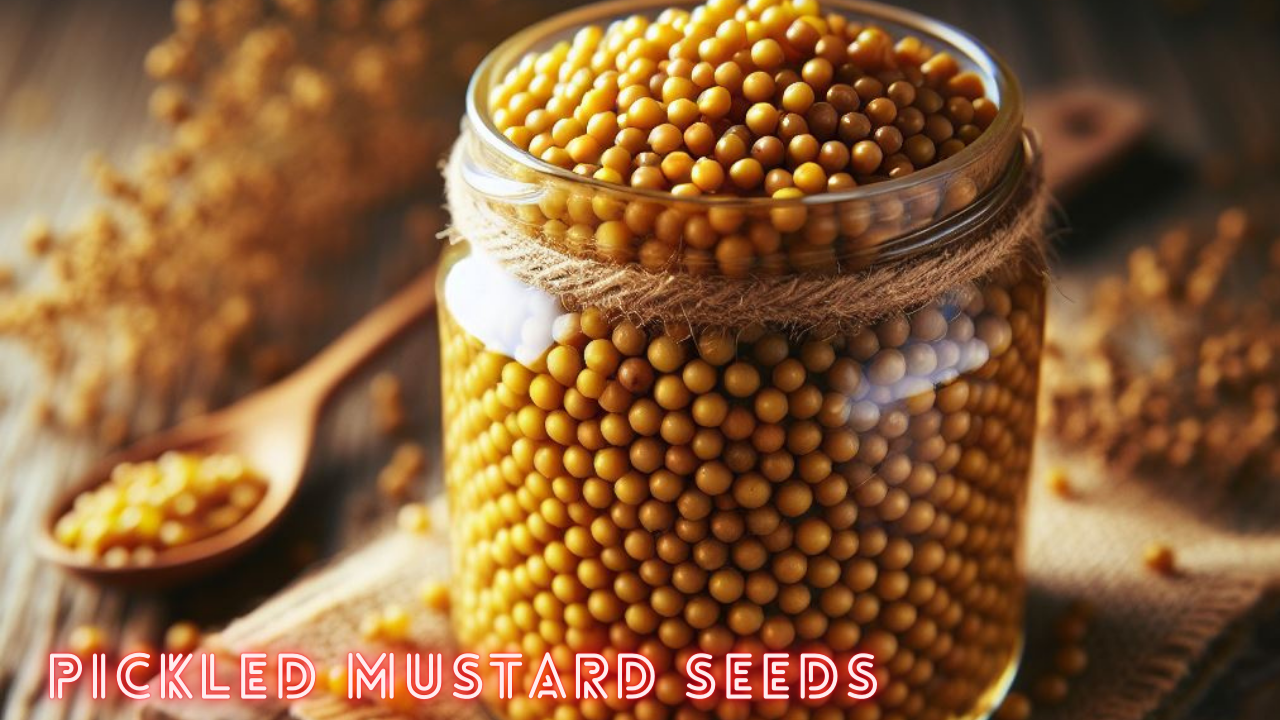Pickled Mustard Seeds
Pickled Mustard Seeds and Their Culinary Significance
Pickled mustard seeds, often regarded as the “caviar of the South,” have transcended their regional roots to become a global culinary delight. These tiny, brined seeds burst with a tangy, spicy, and slightly sweet flavor, adding both texture and depth to a variety of dishes. Unlike the ground mustard or prepared mustard sauces familiar to many, pickled mustard seeds retain their shape and pop in your mouth, releasing their vibrant flavors in an instant. This unique characteristic has made them a favorite among chefs and food enthusiasts looking to add a distinctive touch to salads, sandwiches, dressings, and gourmet dishes.
The History of Mustard as a Condiment and Its Evolution
The history of mustard as a condiment stretches back thousands of years, with its first recorded use dating to ancient civilizations. Mustard seeds were popular among the Greeks and Romans, who used them ground up as a paste or mixed with wine into a sauce similar to the prepared mustards we know today. Over centuries, mustard has evolved and spread across the globe, with each region adopting its own variations. The pickling of mustard seeds is a relatively more recent technique, which adds a preservation element and enhances the seeds’ pungency and flavor profile. This method has roots in both European and Asian traditions, showcasing the versatility and adaptability of mustard as an ingredient.
The history of mustard as a condiment spans thousands of years and various cultures. Mustard originated from ancient civilizations and was first experimented with by the Romans using wine. The Romans also observed Gaul’s using mustard seeds and spread its popularity across Europe.
The Making of Pickled Mustard Seeds
Ingredients Needed for Pickling Mustard Seeds
The basic ingredients for pickling mustard seeds are simple and accessible, making it easy for anyone to try their hand at this culinary project. Here’s what you’ll need:
- Mustard seeds (yellow, brown, or a mix)
- Vinegar (white wine, apple cider, or champagne vinegar are popular choices)
- Water
- Sugar (white or brown)
- Salt
- Optional flavorings: Garlic, herbs (dill, tarragon, rosemary), spices (turmeric, chili flakes), citrus zest
Guide to Making Your Own Pickled Mustard Seeds at Home
- Rinse the Seeds: Begin by rinsing your mustard seeds in cold water to remove any impurities.
- Simmer: In a saucepan, combine water, vinegar, sugar, and salt. Bring to a simmer over medium heat, stirring until the sugar and salt have dissolved.
- Add the Mustard Seeds: Add the mustard seeds to the simmering liquid. If you’re using any optional flavorings, add them at this stage.
- Cook: Reduce the heat and let the mixture simmer gently for about 30 minutes, or until the seeds are plump and tender. The seeds should absorb most of the liquid and swell in size.
- Cool and Transfer: Remove the saucepan from heat and allow the mixture to cool. Once cooled, transfer the pickled mustard seeds and any remaining liquid into a clean, airtight jar.
- Refrigerate: Refrigerate the pickled mustard seeds for at least 24 hours before using. This resting period allows the flavors to meld and intensify.
Variations in Recipes and Regional Differences
The basic recipe for pickled mustard seeds is just a starting point. Variations abound, reflecting regional tastes and traditions. For instance, in some Asian recipes, rice vinegar and soy sauce might be used for a distinct flavor profile, while European versions might lean on wine vinegars and herbs. Experimenting with different vinegars, sugars. Additional flavorings can lead you to discover a version that best suits your palate and complements your culinary creations. By embracing the simplicity yet versatility of pickled mustard seeds, you can elevate ordinary dishes with bursts of flavor and texture that are both surprising and delightful.
Culinary Uses and Benefits
Incorporate Pickled Mustard Seeds into Various Dishes
Pickled mustard seeds are remarkably versatile, capable of elevating both savory and sweet dishes with their unique texture and flavor profile. Here are some ways to incorporate them into your culinary repertoire:
- Dressings and Sauces: Stir them into vinaigrettes, mayonnaise, or mustard-based sauces for an extra pop of flavor and texture.
- Toppings: Use them as a garnish on deviled eggs, bruschetta, or avocado toast for a burst of tangy spice.
- Sandwiches and Burgers: Spread a spoonful on sandwiches and burgers to add an unexpected twist.
- Salads: Sprinkle over salads for a crunchy, tangy addition.
- Meats and Fish: Serve alongside or on top of grilled meats, sausages, or salmon as a condiment.
- Cheese Platters: Pair with cheeses and crackers as part of a charcuterie board.
- Desserts: For a bold move, add them to sweet dishes like fruit salads or atop lemon tarts for a surprising contrast. Visited my other post
The Health Benefits Associated with Mustard Seeds
Mustard seeds, the base ingredient of pickled mustard seeds, are not only flavorful but also packed with health benefits. They are:
- Rich in Nutrients: Mustard seeds are a good source of omega-3 fatty acids, magnesium, selenium, and calcium.
- Anti-inflammatory Properties: The seeds contain compounds that can help reduce inflammation and relieve pain.
- Antibacterial and Antifungal: Mustard seeds have been shown to have antibacterial and antifungal effects.
- Digestive Health: They can help improve digestion and relieve constipation due to their high fiber content.
- Cancer Prevention: Components in mustard seeds have been studied for their potential to help prevent certain types of cancer.
Getting the Most Out of Pickled Mustard Seeds in Cooking
- Balance Flavors: Pickled mustard seeds can be potent; start with a small amount and adjust to taste.
- Combine Textures: Their unique texture pairs well with creamy or soft foods, offering a delightful contrast.
- Experiment: Don’t be afraid to try them in unexpected dishes; their versatility might surprise you.

Pairing and Preservation
Best Foods and Flavors to Pair with Pickled Mustard Seeds
Pickled mustard seeds can complement a wide array of ingredients, but they pair exceptionally well with:
- Fatty Meats: The acidity and tanginess cut through the richness of pork belly, duck, or sausages.
- Cheese: Especially good with sharp cheeses like cheddar or creamy ones like goat cheese.
- Fish: Excellent with fatty fish like salmon or on sushi for an added zest.
- Sweet Elements: The tanginess balances well with sweet components, making them a great addition to salads with fruit or sweetened dressings.
Store Pickled Mustard Seeds for Longevity
Proper storage is key to preserving the quality and extending the shelf life of pickled mustard seeds:
- Airtight Containers: Store in a clean, airtight glass jar.
- Refrigeration: Keep refrigerated once opened. The acidic brine acts as a preservative, allowing them to last for several months up to a year if kept cold.
- Keep Submerged: Ensure the seeds are fully submerged in the brine to prevent mold growth.
Creative Recipes Featuring Pickled Mustard Seeds
- Pickled Mustard Seed Honey Glaze: Perfect for brushing on grilled chicken or pork chops.
- Creamy Mustard Seed Dressing: Blend with mayonnaise, yogurt, or sour cream for a tangy salad dressing.
- Spicy Mustard Seed Salsa: Mix with tomatoes, onions, cilantro, and lime juice for a twist on traditional salsa.
- Mustard Seed-Crusted Salmon: Use them as part of a crust for baking or pan-searing salmon.
By exploring the myriad ways to use pickled mustard seeds in cooking, you can discover new flavor profiles and textures that enhance your dishes. Their health benefits and the joy of creating something unique in the kitchen make them a worthwhile addition to any culinary adventure.
FAQS on Pickled Mustard Seeds
1. What are pickled mustard seeds used for in cooking?
Pickled mustard seeds can be used as a garnish or ingredient to add a burst of flavor and texture to dishes. They are excellent in salads, on sandwiches, mixed into dressings, or served alongside meats and cheeses.
2. Can I use any type of mustard seeds for pickling?
Yes, you can use yellow, brown, or black mustard seeds for pickling. Each type offers a different flavor profile, with yellow being milder and brown or black seeds being more pungent.
3. How long do pickled mustard seeds last?
When stored in an airtight container in the refrigerator, pickled mustard seeds can last for up to 1 year. Ensure the seeds are fully submerged in the liquid to maintain their quality.
4. Are pickled mustard seeds spicy?
Pickled mustard seeds have a mild spice level. The pickling process tames their natural heat, resulting in a tangy, slightly sweet flavor with a subtle spice kick.
5. How can I incorporate pickled mustard seeds into my meals?
Use pickled mustard seeds as a topping for deviled eggs, stir them into potato salads, spread them on sandwiches, or mix them into vinaigrettes for a unique flavor.
6. What health benefits do mustard seeds offer?
Mustard seeds are a good source of omega-3 fatty acids, magnesium, selenium, and fiber. They may have anti-inflammatory properties and contribute to heart and digestive health.
Conclusion
In wrapping up our culinary journey into the vibrant world of pickled mustard seeds, it’s clear that these tiny, tangy pearls offer more than just a burst of flavor—they’re a gateway to elevating your dishes with unexpected textures and nuanced tastes. Whether you’re a professional chef seeking to impress with intricate flavor profiles or a home cook aiming to bring a new twist to family favorites, pickled mustard seeds are your secret weapon. They not only enrich your cooking with their distinctive taste but also invite creativity and experimentation in the kitchen. By exploring the art of pickling mustard seeds, you unlock a treasure trove of culinary possibilities, making every meal an adventure.
